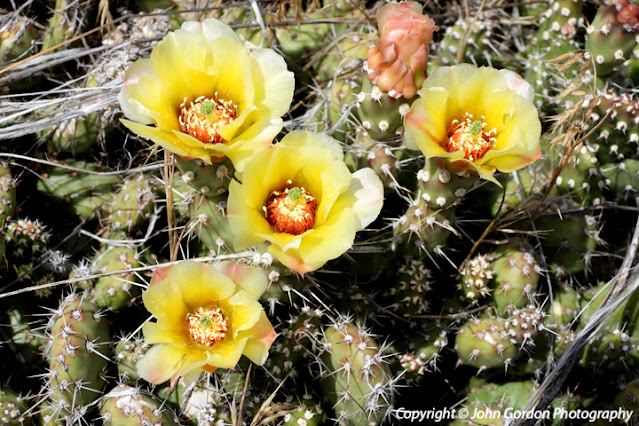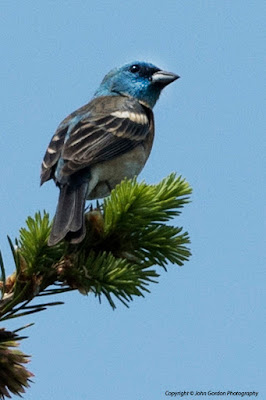Banford Road/Chilliwack
The last few moments of my Fraser Valley (FV) Big Year were spent on Banford Road. It was freezing cold, I lent out the car window and photographed snow drifting across the road. It was my last chance to add a few more birds to my year list. The light was fading, the roads icy, it was time to call it a day.
It had been a good year, better than I ever thought possible with so many good memories to carry forward.
I had previously birded a few of the better known FV locations including Cheam Wetlands, The Great Blue Heron Reserve and Hope Airport. There were however many areas I hadn't. The idea was to explore, bird and have quality time.
 |
| -13 celsius with a wind sheer of -35c. Snow drifting across Banford Road. |
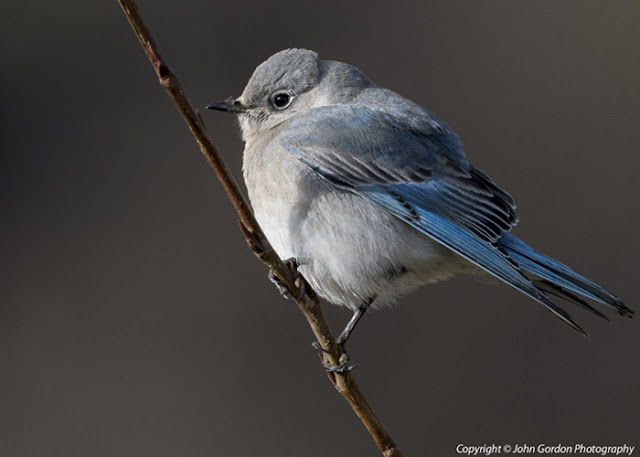 |
Mountain Bluebird
January 19/2021 |
There was help. The BC Rare Bird Alert run by Mel Hafting regularly lists FV rarities and the Fraser Valley Birding site operated by Gord Gadsden reports local sightings. Both are invaluable assets. Another resource for the FV birder is eBird's Fraser Valley Hotspots
The free ap provides stats and sightings. I studied it, mapping out where and when birds might be found.
In the last decade eBird has changed the science of birding in the same way digital photography has.
 |
| Horned Lark on a warmer day |
Birding in the FV was different right from day one. Unlike Metro Vancouver where a well oiled network of birders share finds 24/7 the FV has no such network, none I could find initially. At first I hardly ever met another birder. That changed as the months passed by and I began to make a few contacts, some of whom have become good friends. The only time birders seemed to meet en masse would be for a twitch. A good example was the recent sighting of a Red-shouldered Hawk at the Tuyttens Rd Wetlands in Agassiz.
 |
| Tuyttens Wetlands |
Earlier in the year I had some good birds at Tuyttens. Townsend's Solitaire, Least and Western Sandpiper, Lesser and Greater Yellowlegs and Redhead, all the while surrounded by stunning scenery. I made at least a dozen trips on my way back and forth to bird Harrison Lake and nearby Cheam Wetlands

|
Red-shouldered Hawk. |
Other notable twitches included a Least Flycatcher, American White Pelican, Blue Jay and Black Phoebe to name just a few. Birding in the FV was mostly a solitary affair except for a couple of group trips with Ed, John, Joel and Larry up to Manning Park.
 |
| Glaucous Gull |
Here are some of my favourite FV Big Year birds by location.
Columbia Valley
The Columbia Valley is reached by passing through Cultus Lake and completing a loop which skirts along the US border. A little creepy when you know there are camera watching your every move but great for birding.
 |
| Red-breasted Sapsucker. |
John Vooys and Ed Klassen showed me around the valley including a feeder where on my third attempt I snagged these grosbeaks as they came to ground for a drink.
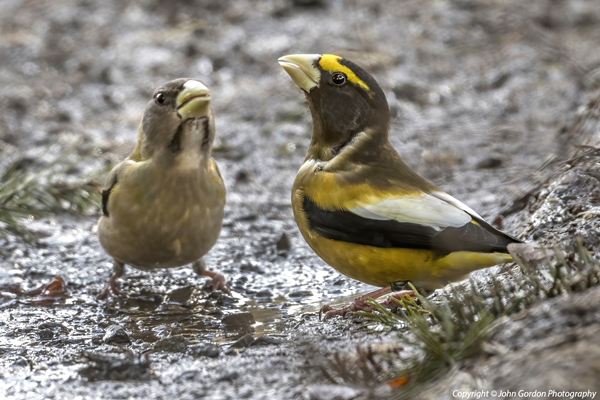 |
| Evening Grosbeak. |
Sumas Prairie
 |
Trumpeter Swans and Snow Geese on Sumas Prairie, days before the Big Flood.
iPhone 8
|
Driving along Sumas Prairie an American Kestrel was hunting alongside the road. The car made for a great blind, opening a car door would no doubt have flushed the bird and more importantly lost any chance of the bird making a kill. Later on the same field a Rough-legged Hawk provided another opportunity. I waited for it to fly low so I could frame it against mountains in the distance. A White bird against a white sky does not normally make for a good composition.
American Kestrel hovering over a ditch.
 |
| Rough-legged Hawk. |
Hillkeep Regional Park/Chilliwack Mountain
My favourite park for migratory birds was
Hillkeep Regional Park where I found several species of warblers, flycatchers and swifts between early mid-May and June1. An easy hike and quiet. Part of the park overlooks the Trans Canada where the noise of traffic is evident. The north side of the park however overlooks the Fraser River and is quiet enough to make sound recordings. I was lucky enough to bird Hillkeep three times and had fallouts twice. My first visit resulted in several species of warblers, the second a fallout of Olive-sided flycatchers. On another visit I was treated to a small flock Black Swift feeding on an insect hatch.
 |
| Black-throated Grey Warbler/Hillkeep Park Chilliwack. |
 |
| A view from Hilkeep. |
 |
| Black Swift. |
North Bend/Fraser Canyon
I spent one day in the Fraser Canyon a week before wildfires closed the roads. In the scheme of things it was the beginning of an Annus Horribilis for BC residents dealing with fires, heat domes, floods and a deep freeze. My heart goes out to anyone caught up in any of those climate disasters. In the scheme of things a Big Year was somewhat of a frivolous endeavour compared to all the woes many others experienced. It did however keep me grounded while so many suffered and continue to suffer from the pandemic.
There were a number of birds that were relatively easy to find in North Bend including Nashville Warbler, Chipping Sparrow and Veery, all really tough in the lower FV.
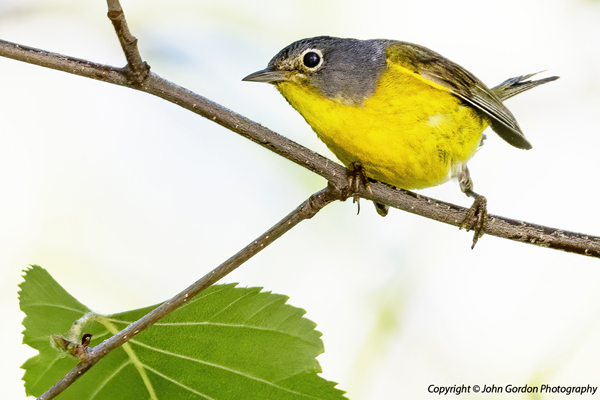 |
| Nashville Warbler. |
 |
| North Bend looking toward Boston Bar. |
 |
| Veery. |
Willband Creek Park
 |
| Early morning at Willband. |
Willband Creek Park is the place to find several species of duck, swan, sandpiper, warbler, four species of swallow, Green Heron, and American Bittern. The latter so elusive that all I ever had were scope views but that is all a lister really needs for a tick. The former bird photographer in me would have been most disappointed but over the years I have incorporated scoping and general birding into my photography and as the Brownies say,
"Get what you get and don't get upset".
 |
| Northern rough-winged Swallow. |
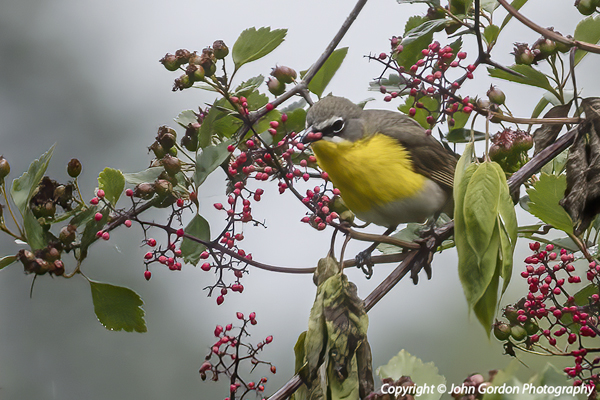 |
| Yellow-breasted Chat. |
It was June 14 when John Vooys alerted me to a rare Yellow-breasted Chat. His keen ear had picked up the bird in a far corner of Willband Creek and he had asked me to see if I could check it out and make sure of the ID with a photograph. The chat was feeding on what looked like English Hawthorn although I might be corrected on that. His hunch was dead on. The chat stayed around for a couple of weeks and eventually many got on the bird, It was about this time I was beginning to make more some contacts in the FV birding community.
Kilby Provincial Park
Due to wild fires and Covid-19 travel restrictions I decided to plan my birding/camping around a number FV campgrounds. Kilby Regional campground for example allowed me to bird not only the Kilby Village area but also nearby Harrison Mills and areas upstream. There were good numbers of birds both on the water and in the forest where I found a Cassin's Vireo, one of my target birds. Purple Martins were singing from telephone wires and fledgling Barn Swallows were taking their first flights. One of my Purple Martin sound recordings made it on the Macaulay Library which was a first for me.
 |
| Townsend's Solitaire/Kilby Regional Park. |
Cheam Wetlands Regional Park
 |
Cheam Wetlands in summer.
|
Cheam Wetlands produced some really good birds including Eastern Kingbird, Solitary Sandpiper and American Redstart. There was always something of interest on the lake itself. Blue-winged, Cinnamon Teal and Northern Waterthrush, Osprey and others.
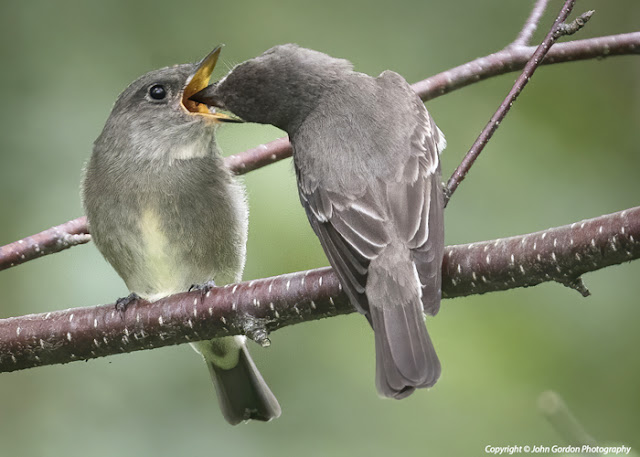 |
| Western Wood-Pewee. |
Island 22 Regional Park
One species I particularly wanted to see in the Fraser Valley was the American Redstart. After dipping on the species several times and wary of the notorious Island 22 mosquitos I arranged to meet Ed Klassen. I remember the day very well, it was around the time that 751 unmarked graves were found at the site of a former residential school in Saskatchewan. We exited our respective cars having both listened to the same news broadcast on CBC radio. Both of us were stunned, shocked by the horrific stories we had just heard.
We needed to get into the forest and look for birds, it would help soothe our thoughts. Soon enough, after searching a number of likely spots Ed heard the telltale call and song of the redstart.
The beauty of the situations is that when looking or listening for a bird the hours go by and the thought processes just calm right down. I can see why many birders forgo the camera and just carry bins.
 |
| American Redstart. |
Great Blue Heron Reserve
The birds and the ticks (not the biting type) kept coming, a few of us re-found the Least Flycatcher at the Great Blue Heron Reserve where I bumped into Ed again. Krissi Martin was there too. Later in the year she would help me find a Harris Sparrow. While looking for the elusive flycatcher an American Redstart flew a few feet above us, this time a female. Eventually I would have redstarts at three different locations. On the way back to the car a pair of raucous Great Horned Owls provided another year bird, what a way to end the day.
 |
| Least Flycatcher. |
Harrison Lake and Lagoon
 |
| Harrison Lake foreshore. |
Harrison Lake is a hotspot. Birds of all kinds birds funnel up and down the valley during migration, some staying longer periods while other species may only dwell a few hours. Some birds were five minute wonders, only seen by a lucky few. Good examples were Arctic Tern and Semi-palmated Plover. I tried for Vesper Sparrow six times without luck. The sheltered lagoon in town is always a good spot for wintering wildfowl. It was around the lagoon I photographed of Horned Lark, Caspian Terns, Bonaparte Gulls, Western, Least, Baird's and Spotted Sandpipers and on several occasions Red-necked Phalarope. Out on the lake the prize sighting was a Black Scoter in September. Other scoters included White-winged and Surf.
One day I met FV eBird co-ordinator Gord Gadsden and we discussed the ever changing procession of birds on the lake. He suggested if I had the time I might want to spend a day just scoping the lake.
A few days later Oct 6 I did just that.
 |
| Baird's Sandpiper |
The day began slowly with a pair of Western Grebes in the distance. Then a White-winged Scoter and eight Greater Scaup. Twenty-Two surf Scoters appeared out of nowhere. Periods of no birds gave me time for my lunch and coffee, all the while sitting on a conveniently placed park bench. Four very hungry Snow Geese and Two Greater White Fronted Geese landed metres from me and provided some great photo ops. Just as Gord had predicted the procession of birds kept coming and going. Horned and Red-necked Grebes. Yellow-rumped warblers feeding amongst the shoreline willows. The day had been most interesting, 15 species in all but no new year birds.
 |
| Harrison Lagoon. |
 |
| Red-necked Phalarope showing the webbed feet. |
I decided to take one more scan of the lake before leaving for home, to my complete surprise I spotted a what looked like a Brown Pelican, it was just a speck in the distance. I drove to the marina to get a better look. Any suggestions circulating that I exceeded the speed limited are just ugly rumours. The moment I arrived the bird had flown off toward Sasquatch Provincial Park. Thinking that the opportunity was lost I sent the news out to Gord and anyone else who had helped me in my Big Year. I sent a blurry pix Mel the BC Rare Bird Alert co-ordinator and soon other birders began arriving, the word was out. The pelican then suddenly returned and spent close to an hour flying around Harrison Bay and marina, periodically landing amongst the California Gulls.
The bird was a new FV bird for everyone. Brown Pelicans are turning up more often on the BC coast but inland is highly unusual. If I had contributed one thing to anyones FV year list the Brown Pelican was it, that's good Karma and my 200th FV year bird.
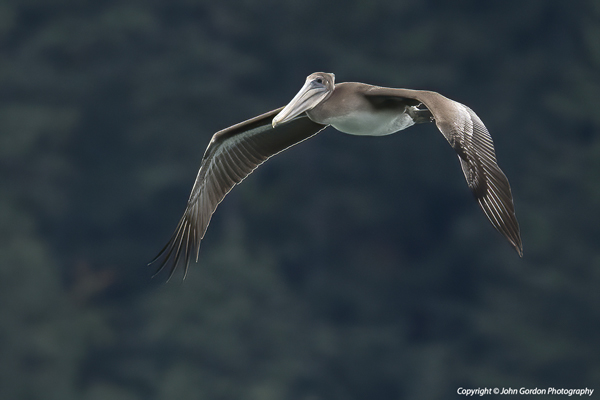 |
| Brown Pelican |
Some odds and ends
Sometimes a bird proves really elusive. One such case was the Harris Sparrow in Abbotsford. Once it was reported a number of us went to have a look. The bird was coming to a balcony feeder. Several of us spent hours in the cold and rain peering at the feeder while standing on the roadside. I cannot imagine what the neighbours were thinking but it was a fruitless and frustrating exercise. The only birds we did see were House Finches and Dark-eyed Juncos. The Harris we were told was travelling with a few White-crowned Sparrows but they rarely showed up and always without the Harris. After two attempts I decided to be pro-active and knock on the door of the house across the street where Krissi had seen it fly to. I knocked on the neighbours door explained the concept of a Big Year and politely asked if I could peer over their backyard fence to see if I could see the bird. I tried twice and both times could only stand the bitter cold for about thirty minutes. I finally came up with a cunning plan and vowed to return. The third visit I brought along some bird seed and asked the owner to spread some on the ground. Being a ground feeders, it only took a few minutes for both the White-crowned and the Harris to appear out from the undergrowth and bingo, I had my two-hundredth and sixth species for the year and what eventually turned out to be my last FV tick.
Finding the Harris Sparrow reminded of the lengths I used to go to get a picture when I worked on newspaper photo stories . I felt good to find the Harris and that my plan worked.
 |
Harris Sparrow
Private Yard Abbotsford |
Last Thoughts
Finally, I would like to thank first and foremost Gord Gadsden, Ed Klassen and John Vooys for taking me under their wings right from the very start. It was Gord who suggested two-hundred year birds would be a good benchmark. I took him on his word. Their combined local knowledge made a huge difference to my final tally. Larry Hooge and Joel Schmidt for the tips on where to find a Western Grebe and Chipping Sparrow on the Matsqui Trail. Krissi Martin for a tip about the Harris Sparrow and the McDonald family for timely texts, all very much appreciated.
Dave Beeke who tipped me off to Band-tailed Pigeons at his feeder and for pointing out an Eared Grebe on Cultus Lake. Jonathan Pap for setting up a Whats Ap group to relay our finds to each other. If I have missed anyone I apologize*.
I can't possibly try to convey a years worth of birding in a blog but for those who keep tabs on such things I birded over one thousand hours ending with two hundred and six species, six more that my target. I heard a few birds but not enough to count them, a few hoots of a Western Screech Owl never made the list but there is alway hopefully another day out in the valley. I upped my Fraser Valley life list to 218 from 156 species a gain of 56 species.
If you got this far in the blog then thanks for reading and have a healthy, happy and birdy 2022.
*In my rush to publish this blog I did forget Jim Buis from Brookside Inn who allowed me to check out his feeders and introduced me to Jim Telford who allowed me to wander around his back-forty. It was there that I eventually snagged a Bank Swallow for my year list.
 |
| Vedder Canal |
 |
| American White Pelican/Vedder Canal |
"It's never too late for a Big Year"
John Gordon
Langley/Cloverdale














